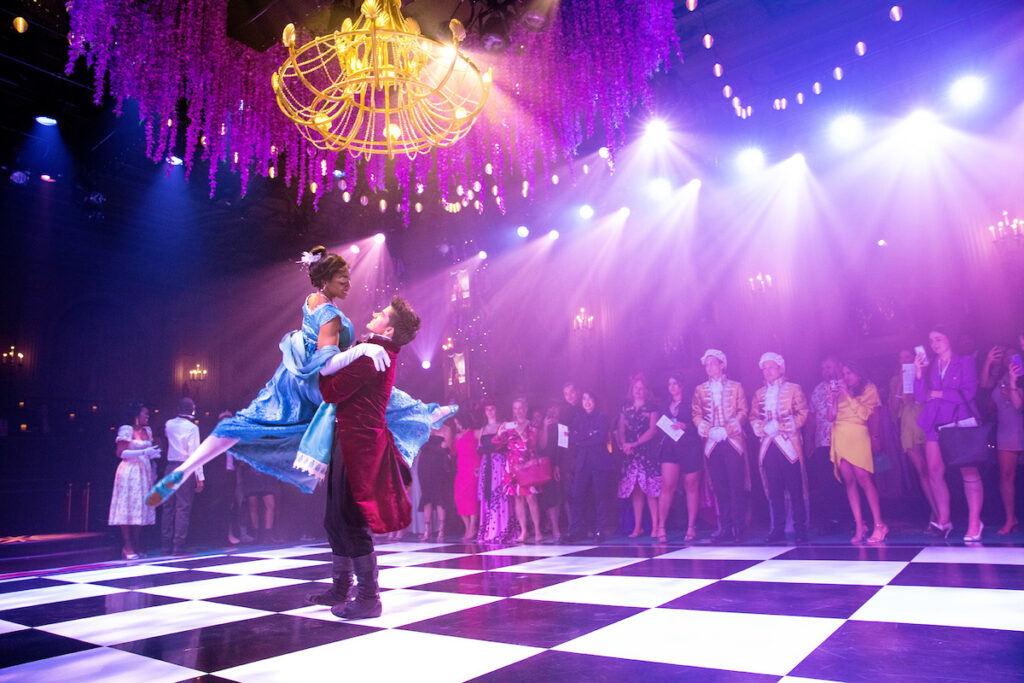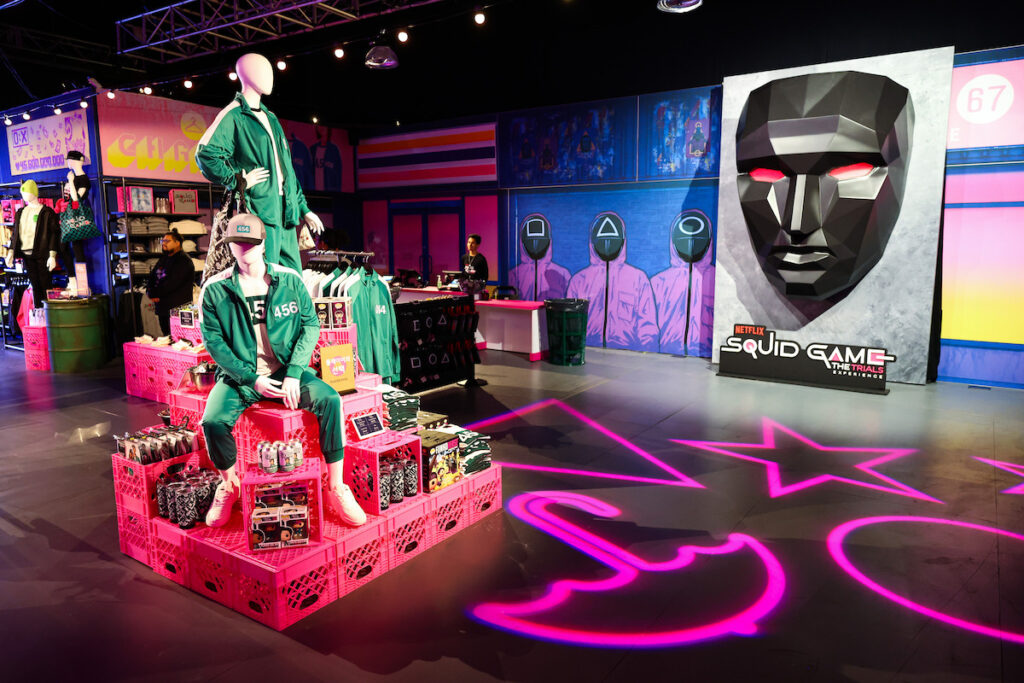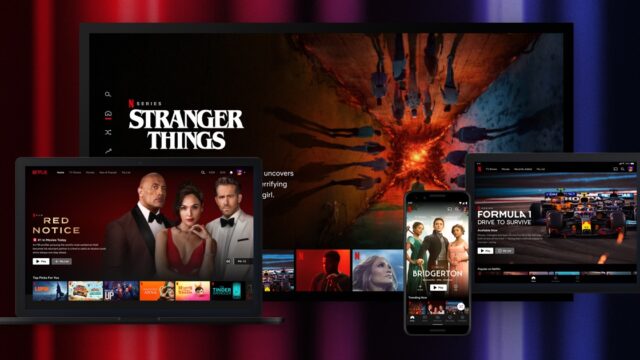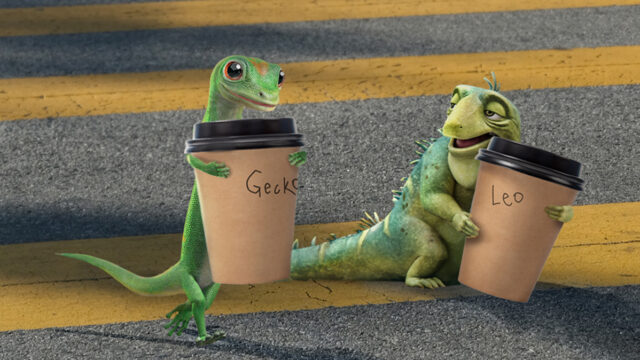What’s the Deal With The Netflix Effect?
Inspiration meets innovation at Brandweek, the ultimate marketing experience. Join industry luminaries, rising talent and strategic experts in Phoenix, Arizona this September 23–26 to assess challenges, develop solutions and create new pathways for growth. Register early to save.
A queue of people spills out onto the pavement outside a quaint, blue-fronted café in North London. Kate Bush’s “Running Up That Hill” finds its way back onto the charts after 37 years. Bridgerton-inspired corsets, gloves and empire waisted ball gowns feature heavily on the 2024 Oscars red carpet.
This isn’t a string of unconnected events; it’s the so-called “Netflix effect” in action, and it’s the work of Marian Lee, who was named the streamer’s chief marketing officer in 2022.
When Lee took on the top job, she was the third CMO in three years to take the reins of Netflix’s $2.5 billion advertising budget. Since then she’s shifted its marketing strategy from something platform-centric to one rooted in championing the brand’s individual shows and driving cultural relevance.
As the streaming wars heat up, Netflix isn’t just vying for subscribers across its standard and ad-supported tiers—it’s also vouching for CMO budgets.
To scale both, Lee is investing in building a relationship with the platform’s audience that’s less transactional, more interactive and deeply rooted in culture.
The Wednesday Addams TikTok dance challenge, a live Squid Game experience in Los Angeles, a traveling Bridgeton Ball and billboards for Lupin that played on luxury advertising tropes are just some of the recent campaigns that have played into this circular strategy, which is allowing Netflix to both tap into the zeitgeist and influence it.
“We can connect fans and put them into our stories versus having them as spectators outside,” Lee told ADWEEK.
Ugly crying, dancing and ‘rabid fandom’
The former Spotify exec pointed to the success of One Day, the 14-episode adaptation of David Nicholls’ 2011 best-selling romantic novel that drew in 15.2 million viewers within 10 days of landing on Netflix, as one example of a show that’s transcended the small screen.
After the series’ debut, the book found itself back in the No. 1 spot on the U.K.’s Sunday Times Bestseller list 23 years after its first imprint. Meanwhile, London café La Maison Highbury (which featured in the show for just 10 seconds) spent days trending on TikTok and Instagram as fans flocked there for a flat white.
This hype was amplified by an “ugly crying” craze on TikTok that saw viewers react to some of the series’ most emotional scenes.
For Lee, the marketing magic lies in listening carefully to what fans are talking about on social, particularly TikTok where Netflix has 35 different accounts and “billions of impressions.”
“We have an engaged fanbase across our social channels globally,” she added. “Our teams are so connected to what each of our fandoms are doing and saying in these channels, so they’re able to spot something that’s bubbling from far away and capitalize on that.”
“We don’t do the same thing on every channel; what works on TikTok might not take off Instagram,” she said, noting the latter was a platform for discovery based on internal TikTok data that found 52% of users had discovered a new actor, movie or TV show on the platform.
In turn, this interactive relationship with followers is influencing not just what happens on Netflix (TikTok virality drove Margaret Qualley series Maid to skyrocket back up the Netflix charts a year and a half after its release), but also its future marketing strategy.
Case in point: the Wednesday TikTok dance challenge, inspired by a scene where lead Jenna Ortega performs an eccentric dance routine to the 1981 single “Goo Goo Muck” by The Cramps. Ortega’s choreography inspired fans to recreate the routine using a sped-up version of Lady Gaga’s 2011 song “Bloody Mary.”
Netflix isn’t afraid to take risks. We work fast and pivot if we see something else working better.
Marian Lee, CMO, Netflix
Gaga got involved in the discourse with her own interpretation and subsequently, the track was used to announce Season 2. “The team here is incredible at pulling that thread the whole way through. They don’t just let conversations happen online … they push the momentum straight back to Netflix,” Lee said.
Lee has also been focused on bringing conversations off-screen and offline by investing in physical events tied to original Netflix shows, making the imaginary world real.
These have included immersive soirees such as The Queen’s Ball: A Bridgerton Experience, which is currently accepting guests in 10 cities across the U.S., and Squid Game: The Trials, a live interpretation of the dystopian game show-style competition featured in the Korean blockbuster series.

A hunger for in-person experiences post-Covid is driving ticket sales, said Lee, along with a “rabid fandom” that’s begging to be brought out of the living room.
“We’re really thinking about how to translate the fandom online and on-screen into real life,” she added.
Measuring cultural clout
Netflix keeping its finger on the culture’s beating pulse is not just about driving subscriptions or engaging its existing audience; it’s also a tool in the platform’s pitch to advertisers amid an economic backdrop where Lee acknowledges CMO budgets are “pinched.”
As an advertiser herself, Lee said she feels a “deep connection” with the brands Netflix is onboarding: “I want genuine and authentic connection [with my own customers], I don’t want to just put an ad out in the world and hope someone sees it. I want it to feel very real. … I want it to feel like I’m taking some kind of cultural insight that’s happening in the world, and [tuning that into] something and putting it out there.”
She continued: “So when I speak to brands about coming on to Netflix, I’m really saying, ‘You can be part of this conversation and put yourself close to where culture is happening.’”
Lee admitted that cultural clout is tricky to measure, but there’s data to suggest showing up in or around shows like One Day or Wednesday has potential to influence consumer intent.
Tourism to Edinburgh, Scotland—where One Day is set—was given a boost after the show aired. Netflix’s own data shows subscribers are 2.4 times more likely to cite the locale of a series or film they’ve seen as their top travel destination.
There are also some more straightforward examples of Netflix’s influence on culture translating into sales. When The Queen’s Gambit debuted in 2021, orders for chess sets spiked 87%, while sales of chess books went up 603%, according to data from NPD Group. Elsewhere, purchases of video game The Witcher 3 shot up 554% between 2018 and 2019 following the success of its eponymous series.

Since launching its ad-supported tier in November 2022, the platform has hit 23 million monthly active users and launched various ad formats. Buyers previously told ADWEEK that scale is the biggest issue with Netflix’s ad tier, but this recently announced growth is a step in the right direction.
Netflix’s revenues climbed 12.5% between January 2023 and January 2024, owing to the ad tier and a crackdown on password sharing. In 2024, its ad revenues are set to overtake Disney+, amassing $1.03 billion versus Disney’s $911.9 million, per eMarketer, so clearly a strategy rooted in culture is resonating.
However, work and rewards still lie ahead for the streamer, with Netflix creating more touch points for brands, whether it’s through live events or its digital store that sells everything from green and red Squid Games tracksuits to Stranger Things basketballs.
“We’ve got so many opportunities with our titles,” Lee said. “We just have to keep grasping that, and putting [stuff] out into the world and seeing what fans respond to. Netflix isn’t afraid to take risks. We work fast and pivot if we see something else working better.”
https://www.adweek.com/brand-marketing/netflix-effect-marian-lee-popular-culture/

